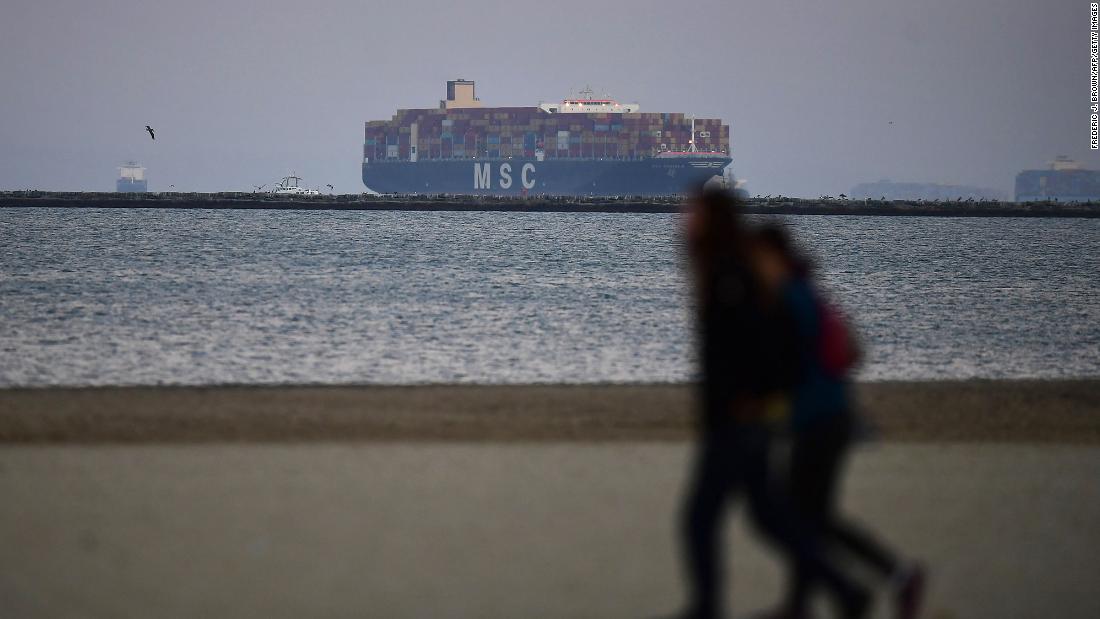
New York (CNN Business)From supply chain chaos to worker shortages, America's economic recovery ran into some serious challenges in the third quarter of the year.
Economists polled by Refinitiv expect that between July and September America's economy grew at the slowest pace since the recovery began — an annualized rate of 2.7% — and a massive step down from the 6.7% rate in the spring.
At 2.7%, the pace of US gross domestic product growth, the broadest measure of economic activity, would pretty much be where it was before the pandemic. The growth rate in the third quarter of 2019, for example, was 2.8%.
So it's not ... terrible. It's just bad news by recovery standards.
But the Federal Reserve Bank of Atlanta's GDPNow model looks even more dire, projecting an annualized growth rate of only 0.5% in the third quarter.
"Supply chain bottlenecks sharply curtailed activity last quarter despite the massive stimulus spending," said economists at Action Economics.
For the Biden administration, it means the White House and lawmakers have their work cut out for them to get the recovery back on track.
Washington said it will work with ports to resolve shipping backlogs, which sounds promising, but right now some $24 billion worth of goods are still floating on container ships outside the ports of Los Angeles and Long Beach.
Shortages everywhere you look
The supply chain crisis is a problem everywhere. Factories are waiting for materials and parts and consumers are standing by for finished products as prices continue to soar. US industrial production declined in September by 1.3% as manufacturers struggled with shortages of materials and qualified workers.
Over time, the supply chain gridlock should ease — or at least that's the hope. But there is also a labor shortage holding companies back.
US job openings spiked to a record 11.1 million in July as companies across sectors were looking for staff to help meet the surge in consumer demand. Restaurants, many of which had to furlough their staffs, have had a hard time getting enough workers back, while manufacturers in particular are complaining of a lack of skilled laborers.
America's workers are in hot demand, but many are still struggling with care responsibilities of their own and the risk of contracting the virus. Those millions of unfilled jobs also mean that workers can afford to wait until they find a good opportunity. In response, many companies are raising wages to attract potential employees.
Nervous consumers
Rising wages are definitely good for consumers, but Americans still had lots of other things to worry about in the third quarter.
For one, the more infectious Delta variant of the coronavirus hurt consumer sentiment, sending the indicator to its lowest level since December 2011. The renewed rise in infections temporarily hurt customer's willingness to be around strangers at restaurants or in airplanes.
Meanwhile, inflation kept hitting new highs. In June, July and September, consumer price inflation stood at 5.4% year-over-year, a 13-year high. Another inflation measure, the price index that tracks consumer spending, rose to 4.3% year-over-year in August — a 30-year high.
Rising prices haven't deterred consumers — at least so far. But there is worry that prices could eventually rise high enough that Americans would start closing their wallets.
Tuesday's consumer confidence data for October suggests this still hasn't happened and consumers are still happy to spend — good news for the fourth quarter.
"We expect a return to form for the American consumer in the final quarter of the year," said Joe Brusuelas, chief economist at RSM US.
In fact, the hope for a robust holiday shopping season might already have helped with GDP growth in the third quarter: "The major catalyst for growth during the third quarter will almost certainly be a strong period of inventory building ahead of the traditional holiday shopping season," Brusuelas said.
Here's why Joe Biden's economy is heading in the wrong direction - CNN
Read More
No comments:
Post a Comment